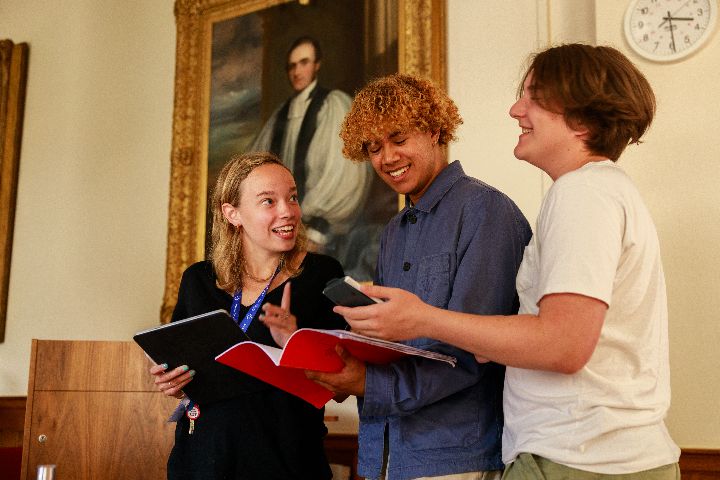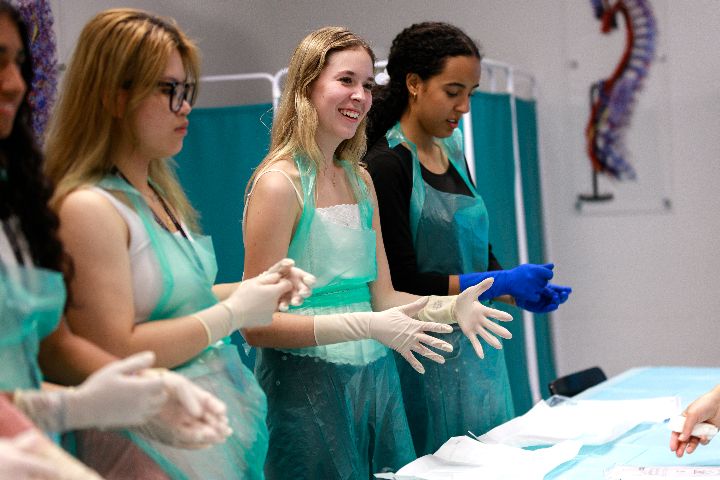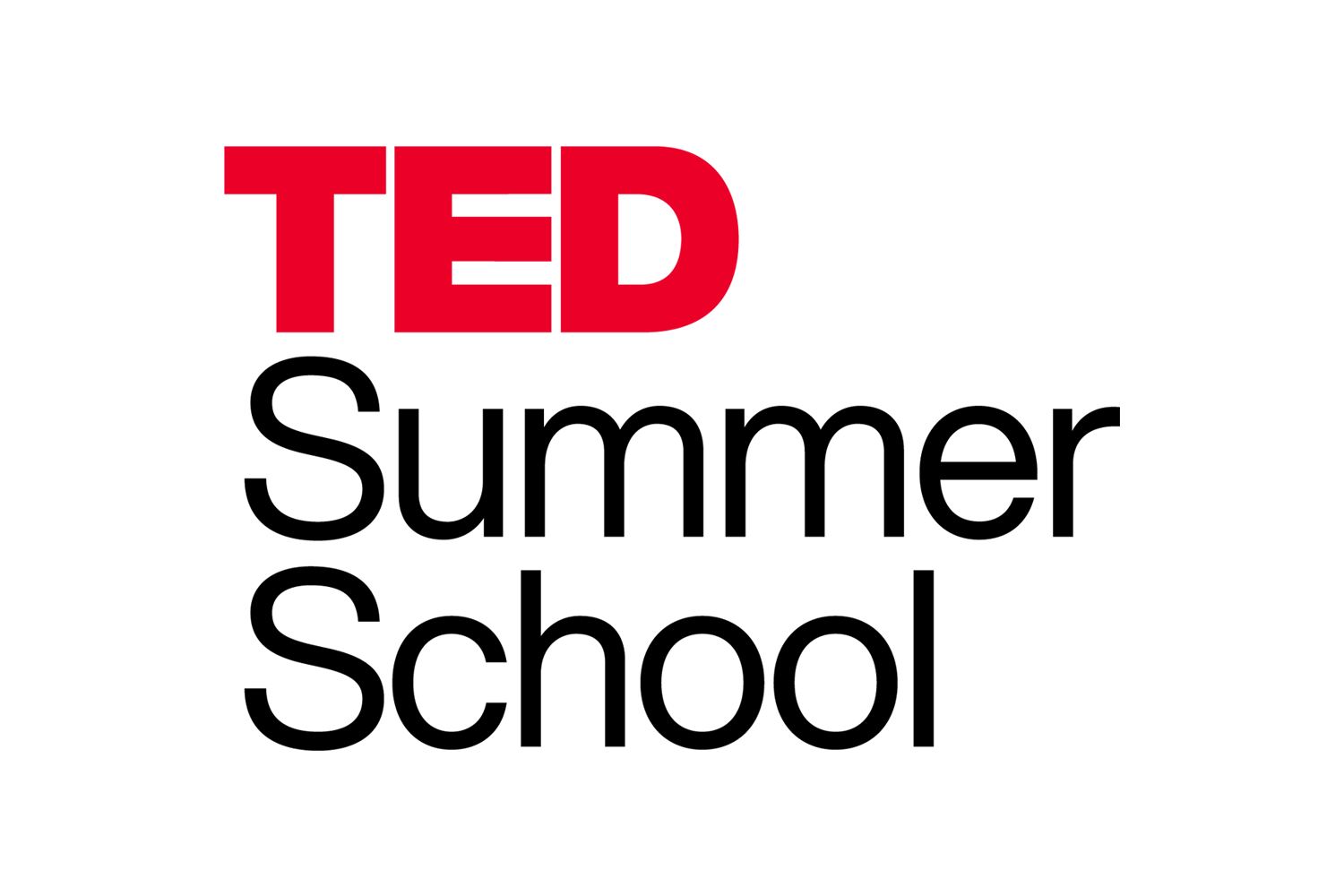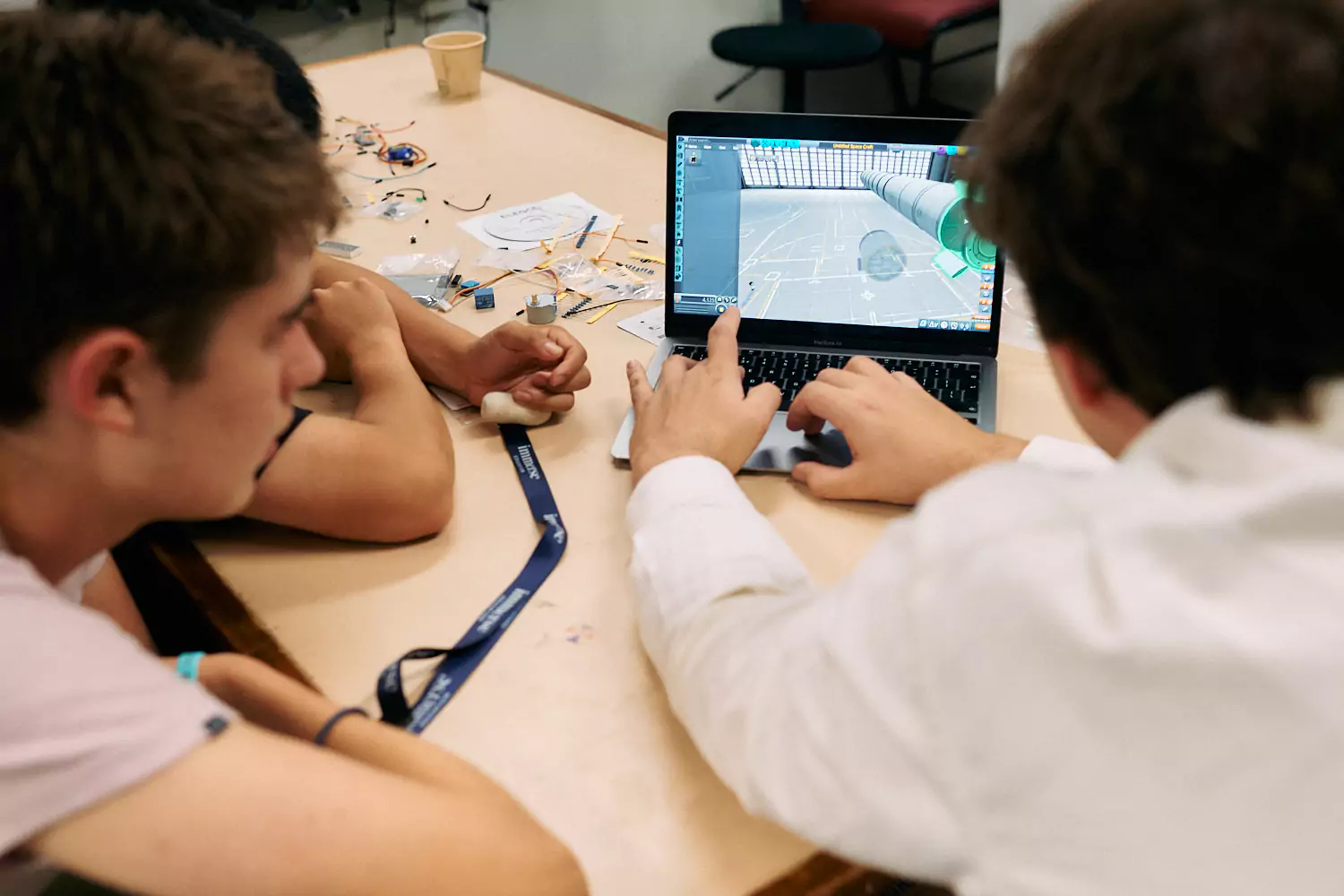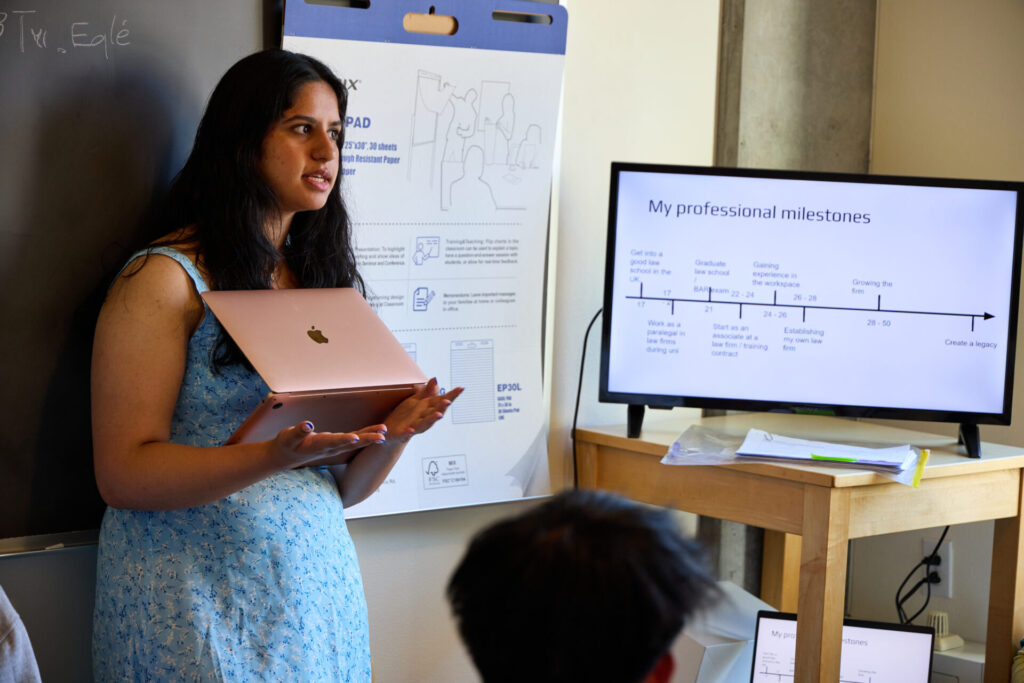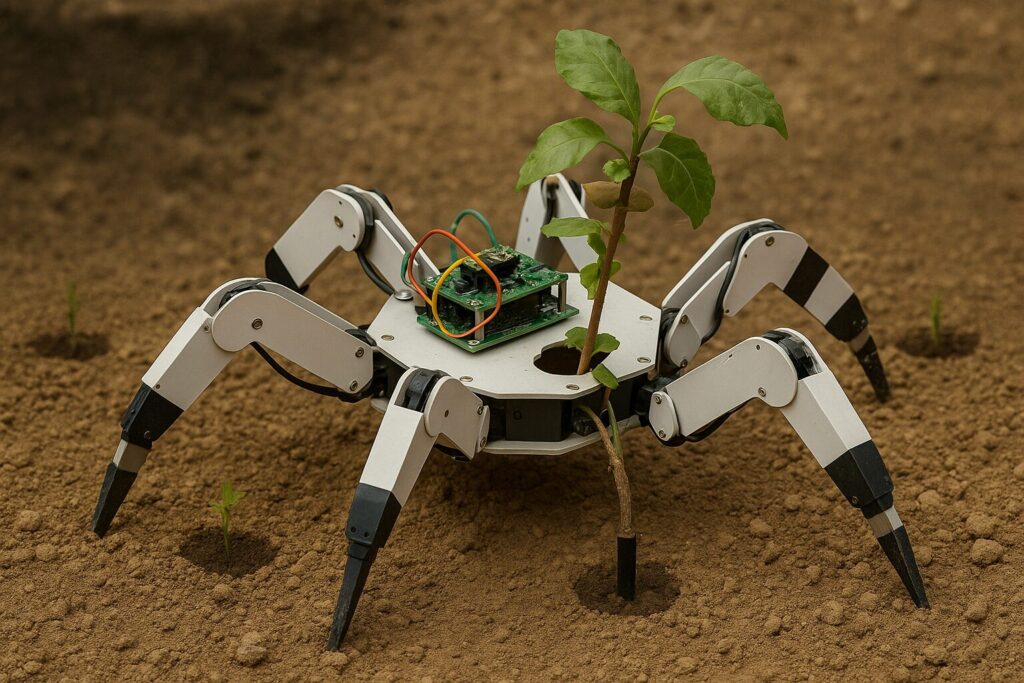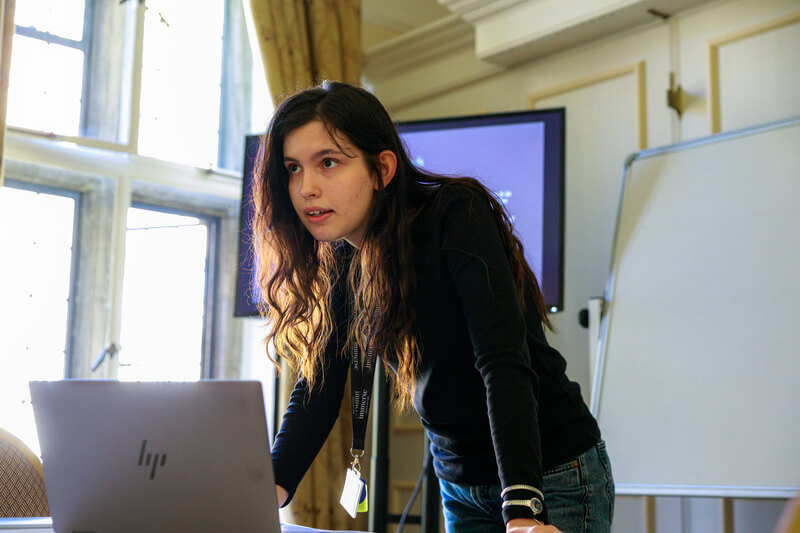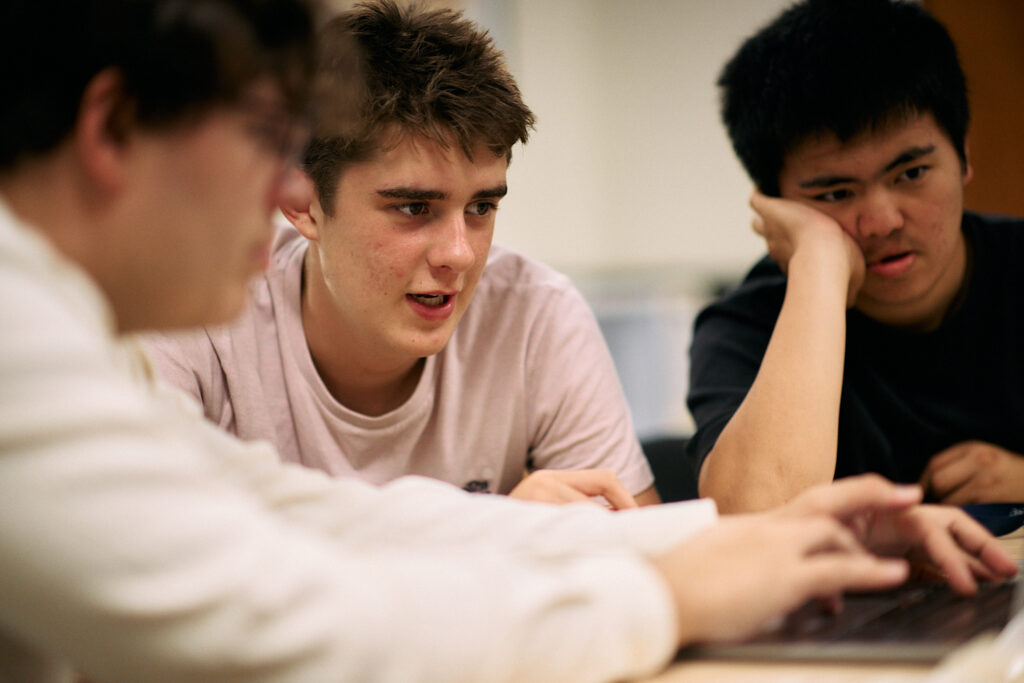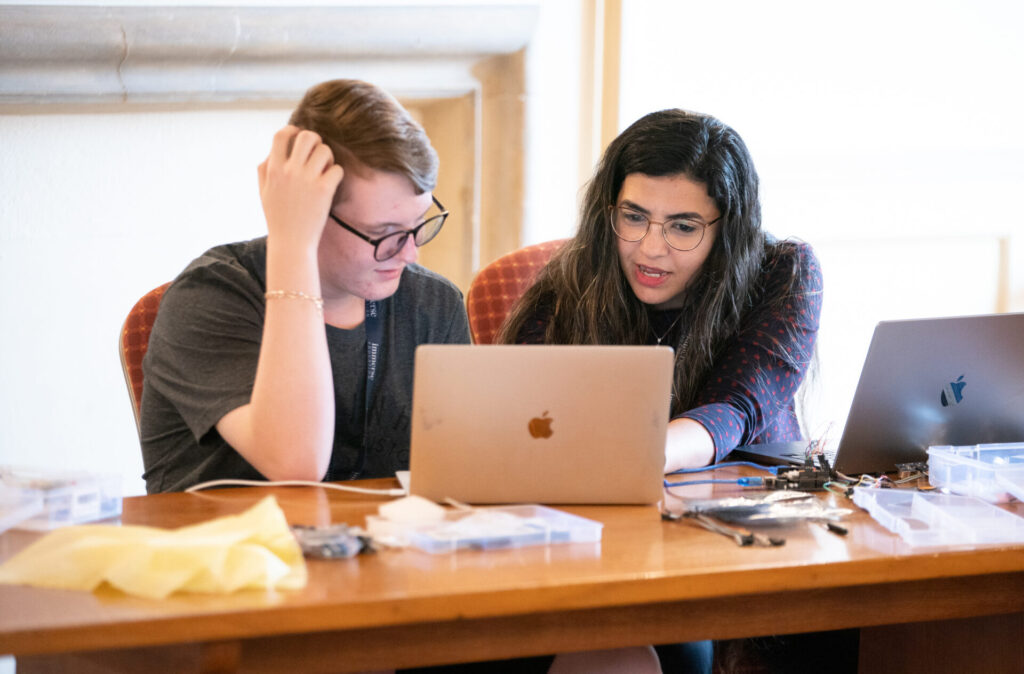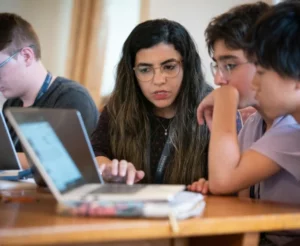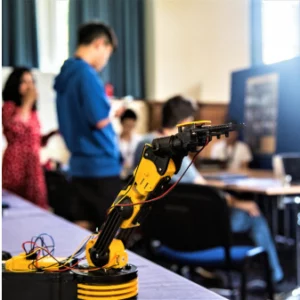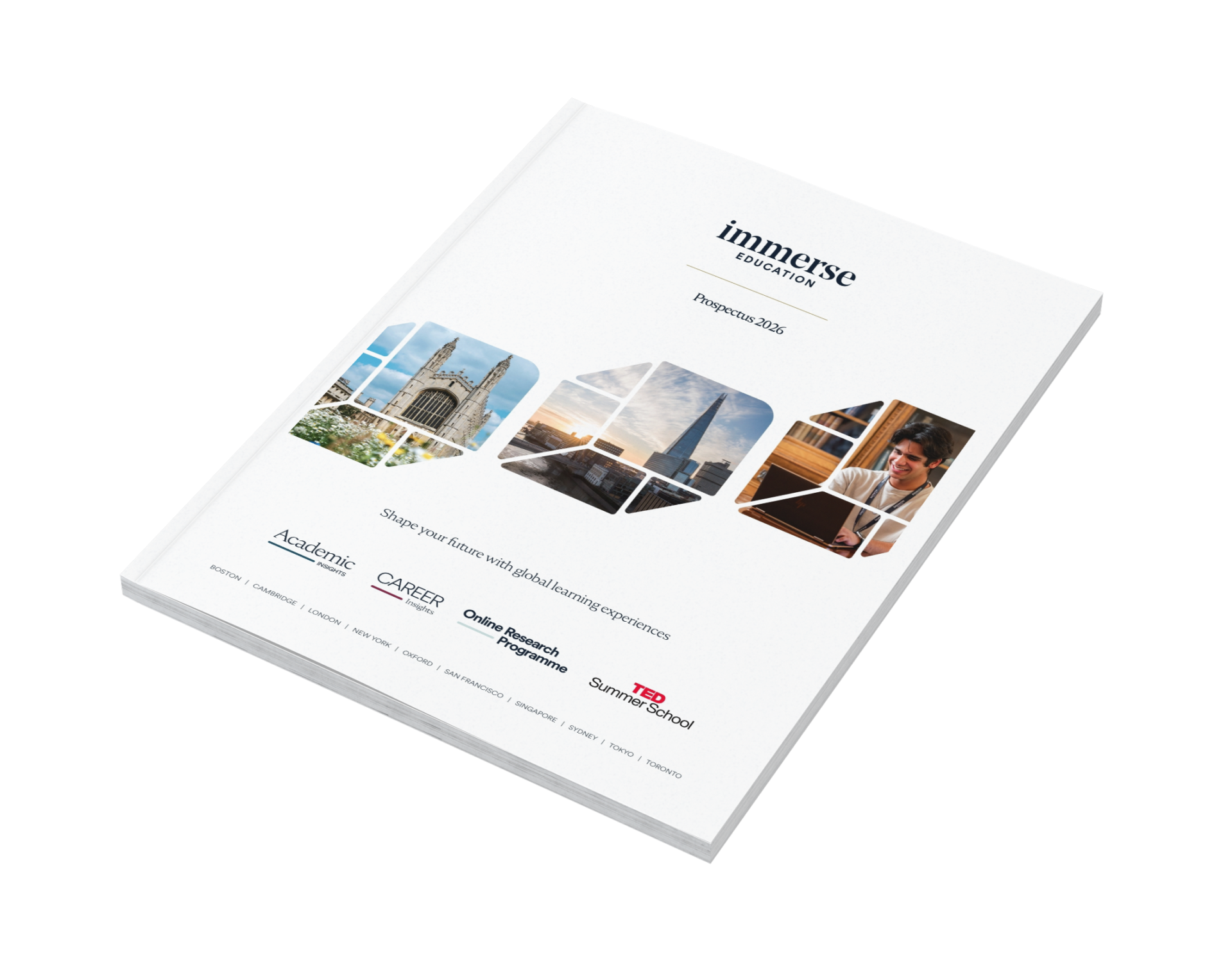STEM competitions for high school students are more than just academic contests – they’re an chance to explore new frontiers through experimentation, apply classroom learning to real-world problems, and connect with likeminded peers around the world to build real tools. Whether you’re calculating in silence or pitching a robotic solution in front of judges, these contests help students deepen their skills and broaden their aspirations.
We’ve grouped these STEM competitions according to each letter of the STEM acronym, breaking science into individual disciplines and including categories for distinct branches of engineering. Aside from competitions, those who are inspired by design thinking or problem-solving may also enjoy exploring an engineering summer school, where practical projects complement what is learned through competitions.
Maths contests tend to emphasize logic puzzles and pure problem-solving, often individually, whereas coding and engineering challenges are usually project-based and team-oriented, testing design thinking as much as technical fluency. Similarly, students fascinated by energy, motion, or mechanics might find that a physics summer school offers valuable insights that can be applied to their STEM projects or competition entries.
Maths Olympiads, hackathons, and science expos each have their own flavour, and you’ll notice that computer science and robotics have grown rapidly in popularity, especially in the last decade.
You can explore and enter each of these STEM competitions for high school students, as well as finding additional tips and competitions across many other disciplines, at succeed.immerse.education/competitions.
So, whether you’re hoping to flex your calculus muscles or collaborate on the next big app, there’s a contest tailored to your passion – and probably a few you haven’t yet considered.
Maths Competitions for High School Students
1. American Invitational Mathematics Examination (AIME)
Summary: The AIME is a selective U.S. high school math contest run by the Mathematical Association of America, held annually in-person at schools.
Key details:
- Format: 15 questions, 3 hours, integer answers (0–999).
- Subjects: Algebra, geometry, combinatorics, number theory.
- Entry: By invitation after high AMC 10/12 scores.
- Prize: Qualify for USA(J)MO; certificates.
- Age: High school (mainly 9–12).
- Nationalities: Primarily U.S., some international.
- Sample: “How many positive integers less than 1000 are divisible by 3 or 5 but not both?”
- Advice: Practice past AIME papers, focus on careful arithmetic, and manage time.
2. American Regions Mathematics League (ARML)
Summary: ARML is a team-based U.S. high school math contest held at university campuses, run by ARML Inc.
Key details:
- Format: Team, Power, Individual, Relay, and Super Relay rounds.
- Subjects: Algebra, geometry, combinatorics, probability.
- Entry: Join a regional ARML team.
- Prize: Trophies, medals, recognition.
- Age: High school.
- Nationalities: Mostly U.S., some international.
- Sample: “Find the sum of all positive integers less than 1000 that are divisible by 7 or 11.”
- Advice: Practice teamwork, specialize, and review past ARML rounds.
3. Asia International Mathematical Olympiad (AIMO)
Summary: AIMO is an annual math competition for students ages 6–18, held in Asian countries and organized by the AIMO Union.
Key details:
- Format: Individual and team written rounds, multiple-choice/short answer.
- Subjects: Arithmetic, algebra, geometry, logic, combinatorics.
- Entry: Via national rounds or invitation.
- Prize: Medals, certificates, trophies.
- Age: 6–18 (multiple divisions).
- Nationalities: International, especially Asia.
Tips: - Sample: “If x+y=10, x+y=10 and x−y=2, what is xy?”
- Advice: Practice logic, review sample AIMO problems, master basics.
4. Australian Mathematics Competition (AMC)
Summary: The AMC is a major global math contest for ages 8–19, run by the Australian Mathematics Trust, held online and in-person.
Key details:
- Format: 30 questions, 60–75 mins, mix of multiple-choice and integer.
- Subjects: Problem-solving, arithmetic, algebra, geometry, statistics.
- Entry: Via schools or individually.
- Prize: Certificates (top 60%), medals (top 0.3%).
- Age: 8–19 (divisions by year).
- Nationalities: Global.
- Sample: “How many three-digit numbers have digits that sum to 10?”
- Advice: Practice past papers, focus on accuracy for early questions, manage time.
5. Caribou Contests
Summary: Caribou Contests are global online math competitions for K–12, run by Caribou Contests Inc. (Canada).
Key details:
- Format: Six online contests/year, 60 min each, puzzles and math.
- Subjects: Logic, arithmetic, geometry, puzzles.
- Entry: Individual or via school; pay per contest or series.
- Prize: Certificates, cash prizes.
- Age: 5–18 (K–12).
- Nationalities: Worldwide.
- Sample: “A frog jumps 3 steps forward and 2 steps back. How many jumps to reach step 10?”
- Advice: Practice logic puzzles, use past Caribou tests, read carefully.
6. World International Mathematical Olympiad (WIMO)
Summary: WIMO is a global math Olympiad for students, held online and in-person.
Key details:
- Format: Written, Olympiad-style.
- Subjects: Math Olympiad topics.
- Entry: Qualify via local Olympiads.
- Prize: Medals, certificates.
- Age: Primary, secondary.
- Nationalities: International.
Tips: - Sample: “What is the next prime after 7?”
- Advice: Practice with Olympiad questions, focus on number theory.
7. Global Mathematics Elite Competition (GMEC)
Summary: GMEC is an international math competition for students, held online and organized by SMO Testing.
Key details:
- Format: Written rounds, problem-solving.
- Subjects: Math Olympiad topics.
- Entry: Via local partners or online.
- Prize: Medals, certificates.
- Age: Primary and secondary.
- Nationalities: International.
- Sample: “What is the smallest positive integer divisible by both 6 and 8?”
- Advice: Practice with Olympiad-style problems, focus on fundamentals.
9. Harvard-MIT Mathematics Tournament (HMMT)
Summary: HMMT is a prestigious student-run math tournament for high schoolers, held at Harvard and MIT.
Key details:
- Format: Individual and team rounds, proof and short-answer.
- Subjects: Algebra, combinatorics, geometry, number theory.
- Entry: Register as a team.
- Prize: Trophies, recognition.
- Age: High school.
- Nationalities: International.
- Sample: “Find all integers x such that x2−5x+6=0”
- Advice: Practice proof-writing, review past HMMT problems, work as a team.
10. International Junior Math Olympiad (IJMO)
Summary: IJMO is an international math competition for students up to age 15, held in Asia and run by SIMCC.
Key details:
- Format: Written, multiple-choice and short-answer.
- Subjects: Arithmetic, algebra, geometry, logic.
- Entry: Qualify via local Olympiads.
- Prize: Medals, certificates.
- Age: Up to 15.
- Nationalities: International.
- Sample: “Points A, B, C, D, and E are on a line such that AB = 3, BC = 6, CD = 8, and DE = 4. What is the smallest possible value of AE?”
- Advice: Practice with logic puzzles, review sample IJMO papers.
11. International Mathematical Olympiad (IMO)
Summary: The IMO is the world’s premier high school math competition, held annually in a different country and run by the IMO Foundation.
Key details:
- Format: 6 proof-based problems over 2 days.
- Subjects: Algebra, combinatorics, geometry, number theory.
- Entry: Qualify through national Olympiads.
- Prize: Gold, silver, bronze medals.
- Age: Under 20, not in university.
- Nationalities: 100+ countries.
- Sample: “Prove that there are infinitely many primes.”
- Advice: Practice proof-writing, study past IMO problems, focus on deep understanding.
12. UK Mathematics Trust Challenges and Competitions
Summary: UKMT runs national math challenges for ages 11–18 in the UK, held in schools.
Key details:
- Format: Multiple-choice and written, various levels.
- Subjects: Problem-solving, logic, arithmetic, geometry.
- Entry: Via schools.
- Prize: Certificates, invitations to higher rounds.
- Age: 11–18.
- Nationalities: UK.
- Sample: “The base of a triangle is increased by 20% and its height is decreased by 15%. What happens to its area?”
- Advice: Practice past UKMT papers, focus on logic.
13. Math Kangaroo
Summary: An international math competition for students in grades 1–12, held in-person and online, run by Math Kangaroo USA and partners.
Key details:
- Format: Multiple-choice, 24–30 questions, 75 mins.
- Subjects: Logic, arithmetic, geometry, puzzles.
- Entry: Register individually or via school.
- Prize: Medals, certificates, gifts.
- Age: 6–18.
- Nationalities: 90+ countries.
Tips: - Sample: “Mike obtains a number x by dividing the number √11 by 3. Where is the number x to be found on the number line?”
- Advice: Practice puzzles, review past Kangaroo questions.
14. Math League High School Contests
Summary: U.S.-based math contests for grades 4–12, held in schools and online, run by Math League.
Key details:
- Format: Written, short-answer.
- Subjects: Arithmetic, algebra, geometry.
- Entry: Via schools or individually.
- Prize: Certificates, trophies.
- Age: 9–18.
- Nationalities: U.S., some international.
- Sample: “What is the largest prime divisor of every 3-digit number with 3 identical non-zero digits?
- Advice: Practice speed and accuracy, review past contests.
15. Mathematical Association of America’s American Mathematics Competition (MAA-AMC)
Summary: The AMC 8/10/12 are U.S. math contests for grades 8–12, run by the MAA, held annually at schools.
Key details:
- Format: Multiple-choice, 25 questions, 40–75 mins.
- Subjects: Algebra, geometry, combinatorics, number theory.
- Entry: Via schools.
- Prize: Certificates, AIME qualification.
- Age: 11–18.
- Nationalities: U.S., some international.
- Sample: “How many ways can you arrange the letters in ‘MATH’?”
- Advice: Practice past AMC papers, focus on accuracy.
16. NRICH Live Maths Problems
Summary: NRICH offers live and online math challenges for students globally, run by the University of Cambridge.
Key details:
- Format: Online problems, open-ended.
- Subjects: Problem-solving, logic, reasoning.
- Entry: Online, free.
- Prize: Certificates, recognition.
- Age: All ages.
- Nationalities: Global.
- Sample: “How many triangles can you make with 6 sticks?”
- Advice: Try creative approaches, explain your reasoning.
Want to boost your maths abilities with a structured online research programme? Complete a university level research programme in mathematics with Immerse.
Biology Competitions for High School Students
17. Annual DNA Day Essay Contest
Summary: An international essay contest for high school students, run by the American Society of Human Genetics (ASHG), held virtually each spring.
Key details:
- Format: Submit an original essay (typically 750 words) on a genetics-related prompt.
- Subjects covered: Genetics, genomics, ethical/social issues in genetics.
- How to enter: Submit essays individually online; teachers may also submit on behalf of students.
- Prize: Cash awards for top essays; certificates for honorable mentions.
- Age range: High school students (grades 9–12).
- Nationalities: Open internationally
- Sample question: “If you had to undergo genetic testing, would you want AI to be used to help make sense of your results?”
- Tips for success: Read the prompt carefully, use reputable sources, and clearly explain your ideas.
18. Australian Brain Bee Challenge
Summary:
The Australian Brain Bee Challenge is a neuroscience competition for Australian high school students, run by the Australasian Neuroscience Society, with online and in-person rounds.
Key details:
- Format: Online quiz (Round 1), state finals, and a national final with practical and oral components.
- Subjects covered: Brain anatomy, function, diseases, and neuroscience research.
- How to enter: Register through your school; Round 1 is online.
- Prize: Trophies, certificates, and the chance to represent Australia at the International Brain Bee.
- Age range: Year 10 students (usually 15–16).
- Nationalities: Australia.
- Sample question: “Which part of the brain is responsible for memory formation?”
- Tips for success: Study the official Brain Facts book and practice with past questions.
19. Biology Challenge
Summary:
A UK-based online biology competition for 13–15-year-olds, run by UK Biology Competitions (UKBC).
Key details:
- Format: Two 25-minute multiple-choice papers, taken online at school.
- Subjects covered: General biology, including ecology, physiology, and cell biology.
- How to enter: Schools register students.
- Prize: Gold, silver, bronze certificates.
- Age range: 13–15.
- Nationalities: Primarily UK, some international schools.
- Sample question: “Which organelle is responsible for photosynthesis?”
- Tips for success: Review KS3/GCSE biology and practice with sample questions.
20. British Biology Olympiad
Summary:
The British Biology Olympiad challenging UK competition for A-level students, run by UK Biology Competitions (UKBC), held online in schools.
Key details:
- Format: Two 45-minute multiple-choice papers.
- Subjects covered: Advanced biology topics, including genetics, physiology, and ecology.
- How to enter: Schools register students.
- Prize: Gold, silver, bronze certificates; top students may progress to international selection.
- Age range: 16–18.
- Nationalities: Primarily UK, some international.
- Sample question: “What is the main function of ribosomes?”
- Tips for success: Revise A-level biology and practice with past Olympiad questions.
21. Intermediate Biology Olympiad 2025
Summary:
A UK biology competition for 16–17-year-olds, run by UK Biology Competitions (UKBC), held online.
Key details:
- Format: 60-minute multiple-choice test.
- Subjects covered: A-level/IB biology topics.
- How to enter: Schools register students.
- Prize: Certificates for top performers.
- Age range: 16–17.
- Nationalities: Primarily UK.
- Sample question: “Which hormone regulates blood sugar levels?”
- Tips for success: Focus on A-level/IB content and practice with sample questions.
22. International Biology Olympiad (IBO)
Summary:
IBO is the world’s leading biology competition for pre-university students, held annually in a different country and organized by the host’s Ministry of Education.
Key details:
- Format: Two main parts: theoretical exams (two 180-minute papers) and practical exams (three or four 90-minute lab-based tasks).
- Subjects covered: Cell biology, genetics, evolution, physiology, plant/animal anatomy, ecology, biochemistry.
- How to enter: Qualify via your National Biology Olympiad; each country sends up to four students.
- Prize: Gold, silver, bronze medals; certificates; possible additional prizes.
- Age range: Pre-university students, under 20.
- Nationalities: 80+ countries.
- Sample question: “Given a pedigree, determine the most likely mode of inheritance for a genetic disorder.”
- Tips for success: Master both theory and practical skills, practice with past IBO and national papers, and manage your time carefully.
23. International Brain Bee
Summary:
The Brain Bee is a neuroscience competition for secondary students, held globally, with national and international rounds.
Key details:
- Format: Multiple-choice, written, oral, and practical rounds.
- Subjects covered: Brain anatomy, function, neuroscience research, patient diagnosis.
- How to enter: Qualify via national Brain Bee competitions.
- Prize: Trophies, certificates, and international recognition.
- Age range: Secondary school students (typically 14–19).
- Nationalities: 50+ countries.
- Sample question: “What neurotransmitter is most associated with mood regulation?”
- Tips for success: Study the official Brain Facts book and practice with sample questions.
24. USA Biology Olympiad (USABO)
Summary:
USABO is the premier biology competition for U.S. high school students, run by the Center for Excellence in Education, with online and in-person rounds.
Key details:
- Format: Multiple-choice and short-answer exams; finalists attend a training camp.
- Subjects covered: Advanced biology, including molecular biology, genetics, physiology, and ecology.
- How to enter: Register online; open to U.S. high school students.
- Prize: Medals, certificates, and selection for the U.S. IBO team.
- Age range: High school students (grades 9–12).
- Nationalities: USA.
- Sample question: “What is the function of the Golgi apparatus?”
- Tips for success: Study AP Biology and college-level materials, and practice with past USABO exams.
If STEM competitions for high school students aren’t your thing, check out top essay competions or visit Succeed to find competitions in every subject and category.
Chemistry Competitions for High School Students
25. Cambridge Chemistry Challenge
Summary:
The Cambridge Chemistry Challenge is a UK-based advanced chemistry competition for 16–18-year-olds, run by the University of Cambridge, held online or in schools.
Key details:
- Format: Written paper with challenging, open-ended chemistry problems.
- Subjects covered: Physical, organic, and inorganic chemistry.
- How to enter: Schools register students.
- Prize: Certificates (Copper, Silver, Gold, Roentgenium).
- Age range: 16–18.
- Nationalities: Primarily UK, open internationally.
- Tips for success: Practice past papers and show clear, logical working.
- Sample question: “Balance the following redox equation in acidic solution: Fe²⁺ + MnO₄⁻ → Fe³⁺ + ?”
26. International Chemistry Olympiad (IChO)
Summary:
IChO is the world’s leading chemistry competition for secondary students, held annually in a different host country.
Key details:
- Format: Theoretical and practical laboratory exams.
- Subjects covered: Physical, organic, inorganic, and analytical chemistry.
- How to enter: Qualify via your National Chemistry Olympiad; each country sends a team.
- Prize: Gold, silver, bronze medals; certificates.
- Age range: Secondary students, typically under 20.
- Nationalities: 80+ countries.
- Sample question: “Describe the mechanism of the nitration of benzene.”
- Tips for success: Master theory and lab skills, and practice with past IChO exams.
27. International Chemistry Quiz (ICQ)
Summary:
ICQ is an international chemistry quiz for students, run by the Royal Australian Chemical Institute, held online.
Key details:
- Format: Multiple-choice quiz.
- Subjects covered: General chemistry concepts.
- How to enter: Schools or individuals register online.
- Prize: Certificates, medals.
- Age range: Primary and secondary students.
- Nationalities: International.
- Sample question: “Which gas is produced when hydrochloric acid reacts with zinc?”
- Tips for success: Review school chemistry curriculum and practice with sample quizzes.
28. The Royal Society of Chemistry’s Top of the Bench Competition
Summary:
A UK team-based chemistry competition for 14–16-year-olds, run by the Royal Society of Chemistry.
Key details:
- Format: Regional heats and a national final with practical and theoretical challenges.
- Subjects covered: General chemistry, practical skills.
- How to enter: Schools enter teams.
- Prize: Trophies, certificates.
- Age range: 14–16.
- Nationalities: UK.
- Sample question: “What colour does universal indicator turn in a strong acid?”
- Tips for success: Practice teamwork and hands-on lab skills.
29. UK Chemistry Olympiad
Summary:
This national chemistry competition for A-level students, run by the Royal Society of Chemistry, is held in UK schools.
Key details:
- Format: Written exam with challenging, open-ended questions.
- Subjects covered: Physical, organic, inorganic chemistry.
- How to enter: Schools register students.
- Prize: Certificates, medals, and selection for the UK IChO team.
- Age range: 16–18.
- Nationalities: UK.
- Sample question: “Explain the trend in boiling points for the group 7 hydrides.”
- Tips for success: Apply concepts to unfamiliar problems and practice clear explanations.
30. U.S. National Chemistry Olympiad
Summary:
A national chemistry competition for U.S. high school students, run by the American Chemical Society.
Key details:
- Format: Multiple rounds: local, national, and a study camp for finalists.
- Subjects covered: Advanced chemistry, including lab skills.
- How to enter: Qualify via local exams; top students progress to national exams.
- Prize: Certificates, medals, and selection for the U.S. IChO team.
- Age range: High school students.
- Nationalities: USA.
- Sample question: “What is the pH of a 0.01 M HCl solution?”
- Tips for success: Study AP/IB Chemistry and practice with past exams.
Join the Immerse Education 2025 Essay Competition
Follow the instructions to write and submit your best essay for a chance to be awarded a 100% scholarship.
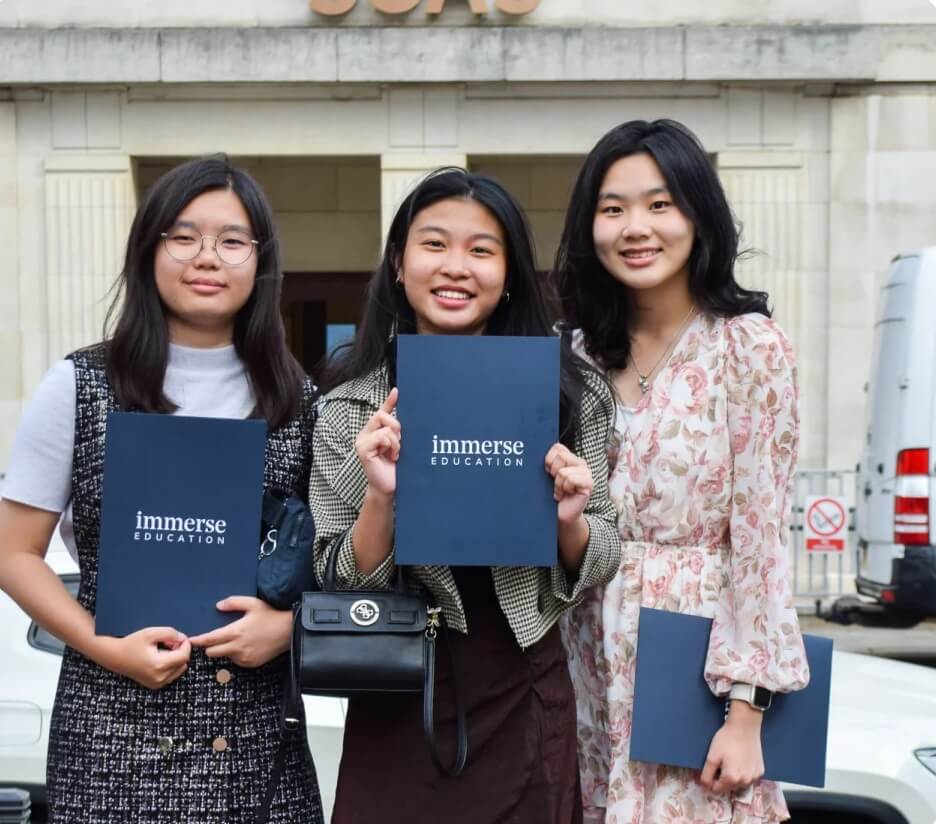
Physics Competitions for High School Students
31. British Physics Olympiad
Summary:
The BPhO is a series of UK-based physics competitions for secondary students, organized by the University of Oxford.
Key details:
- Format: Written exams with theoretical and problem-solving questions.
- Subjects covered: Mechanics, electricity, thermodynamics, waves, modern physics.
- How to enter: Schools register students.
- Prize: Certificates, medals, selection for the UK IPhO team.
- Age range: 16–18.
- Nationalities: UK.
- Sample question: “Calculate the acceleration of a block sliding down a frictionless inclined plane.”
- Tips for success: Practice past BPhO papers and show all working.
32. British Physics Olympiad Junior Physics Challenge
Summary:
A UK competition for Year 10 students (age 14–15), organized by the BPhO.
Key details:
- Format: Multiple-choice and short-answer questions.
- Subjects covered: Core physics concepts: forces, energy, waves, electricity.
- How to enter: Schools register students.
- Prize: Certificates, medals.
- Age range: Year 10 (14–15).
- Nationalities: UK.
- Sample question: “What is the unit of electric current?”
- Tips for success: Review school physics and practice with sample questions.
33. International Physics Olympiad (IPhO)
Summary:
The IPhO is world’s leading physics competition for secondary students, held annually in a different host country.
Key details:
- Format: Theoretical and experimental exams.
- Subjects covered: Mechanics, electromagnetism, thermodynamics, optics, modern physics.
- How to enter: Qualify via your National Physics Olympiad; each country sends a team.
- Prize: Gold, silver, bronze medals; certificates.
- Age range: Secondary students, typically under 20.
- Nationalities: 80+ countries.
- Sample question: “A charged particle moves in a uniform magnetic field. Describe its trajectory.”
- Tips for success: Practice past IPhO problems and develop strong experimental skills.
Science Competitions for High School Students (General & Multidisciplinary)
34. 3M Young Scientist Challenge
Summary:
3M Young Scientist Challenge is the leading U.S. science and innovation competition for grades 5–8, run by 3M and Discovery Education, held virtually and at 3M headquarters for finalists.
Key details:
- Format: Submit a 1–2 minute video describing an original science solution to a real-world problem. Finalists work with 3M mentors and present projects at the national event.
- Subjects covered: Any area of science, technology, engineering, or math (STEM).
- How to enter: Submit video online; open to U.S. students in grades 5–8.
- Prize: $25,000 grand prize, mentorship, and trophies for finalists.
- Age range: 10–14 (grades 5–8).
- Nationalities: United States.
- Sample question: “Describe a new invention that could solve a problem in your community.”
- Tips for success: Focus on clear communication, creativity, and real-world impact; practice your video pitch.
35. Big Science Competition
Summary:
This Australian science competition for students in years 7–10, run by Australian Science Innovations, is held online or in schools.
Key details:
- Format: 50 multiple-choice questions in 60 minutes.
- Subjects covered: Physics, chemistry, biology, earth and environmental science.
- How to enter: Schools register students; some individual entry options.
- Prize: Certificates, invitations to further enrichment programs.
- Age range: 12–16 (years 7–10).
- Nationalities: Australia, some international schools.
- Sample question: “Which gas is most abundant in Earth’s atmosphere?”
- Tips for success: Review school science topics and practice with sample questions.
36. British Science Week Poster Competition
Summary:
A UK-wide creative science poster competition for children aged 3–14, run by the British Science Association, held annually during British Science Week.
Key details:
- Format: Submit a science-themed poster on the year’s theme.
- Subjects covered: Varies by annual theme; broad science focus.
- How to enter: Submit via school or youth group.
- Prize: Certificates and prizes for winners in each age group.
- Age range: 3–14.
- Nationalities: UK.
- Sample question: “Create a poster showing how science can help protect the environment.”
- Tips for success: Be creative, use eye-catching visuals, and clearly explain your science idea.
37. Cambridge Upper Secondary Science Competition
Summary:
A team-based science investigation competition for Cambridge IGCSE and O Level students, run by Cambridge Assessment International Education.
Key details:
- Format: Teams plan and carry out a science investigation and submit a project report.
- Subjects covered: Any science discipline (biology, chemistry, physics, environmental).
- How to enter: Schools register teams.
- Prize: Certificates and recognition from Cambridge International.
- Age range: 14–16.
- Nationalities: Worldwide (Cambridge schools).
- Sample question: “Investigate the effect of light on plant growth and present your findings.”
- Tips for success: Plan experiments carefully, collect clear data, and write a thorough report.
38. Education Perfect Science Championship
Summary:
An online science competition for students globally, run by Education Perfect.
Key details:
- Format: Online quizzes and challenges; students earn points for correct answers.
- Subjects covered: General science (biology, chemistry, physics, earth science).
- How to enter: Schools or individuals register online.
- Prize: Certificates, medals, and digital badges.
- Age range: 8–18.
- Nationalities: International.
- Sample question: “What is the chemical symbol for sodium?”
- Tips for success: Practice regularly on the platform and aim for speed and accuracy.
39. International Science Bee
Summary:
A global buzzer-based science quiz for students, run by International Academic Competitions, with online and in-person rounds.
Key details:
- Format: Online Regional Qualifying Exam (50 multiple-choice questions, 20 minutes). Regional Finals and Championships with buzzer-based quiz rounds with science questions.
- Subjects covered: All science disciplines: biology, chemistry, physics, earth science, astronomy, engineering, computer science, and history of science4.
- How to enter: Register online; open to students in various age divisions (elementary, middle, junior varsity, varsity).
- Prize: Certificates, trophies, qualification for international events.
- Age range: 8–18, divided by grade/age.
- Nationalities: International.
40. International STEM Youth Innovation Competition
Summary:
A UK-based STEM competitions for high school students encouraging innovation, run by the British International Education Association, open to students worldwide.
Key details:
- Format: Submit a project or invention in STEM; finalists present to judges.
- Subjects covered: Science, technology, engineering, mathematics.
- How to enter: Register online and submit project.
- Prize: Certificates, trophies, and possible mentorship.
- Age range: 9–21.
- Nationalities: International.
- Sample question: “Design a device to reduce plastic waste in oceans.”
- Tips for success: Focus on originality, feasibility, and clear presentation.
41. National Science Bowl (NSB)
Summary:
A prestigious U.S. science quiz competition for middle and high school teams, run by the U.S. Department of Energy.
Key details:
- Format: Team-based, buzzer quiz format, with regional and national finals.
- Subjects covered: Physics, chemistry, biology, earth science, math, energy.
- How to enter: Schools form teams and register for regional contests.
- Prize: Trophies, trips, and recognition.
- Age range: Middle and high school.
- Nationalities: USA.
- Sample question: “What is the powerhouse of the cell?”
- Tips for success: Practice with buzzer quizzes, cover all science topics, and work as a team.
42. National Science Olympiad
Summary:
A major U.S. science competition for school teams, featuring hands-on and written events, run by Science Olympiad Inc.
Key details:
- Format: Team events in various science and engineering topics; regional, state, and national levels.
- Subjects covered: Life, physical, earth sciences, engineering.
- How to enter: Schools register teams.
- Prize: Medals, trophies, and recognition.
- Age range: Grades 6–12.
- Nationalities: USA.
- Sample question: “Build a bridge that can hold the most weight.”
- Tips for success: Specialize in event topics, practice teamwork, and review past event materials.
43. National STEM Championship
Summary:
A Singaporean team-based STEM competition for high school students, run by Science Centre Singapore.
Key details:
- Format: Team challenges in science, technology, engineering, and math.
- Subjects covered: STEM.
- How to enter: Schools register teams.
- Prize: Certificates, trophies.
- Age range: Secondary students.
- Nationalities: Singapore.
- Sample question: “Design a simple machine to lift a load.”
- Tips for success: Collaborate as a team and apply STEM knowledge creatively.
44. National STEM Contest
Summary:
A Greek STEM competitions for high school students, run by STEM Education Greece.
Key details:
- Format: Project-based, with presentations.
- Subjects covered: STEM.
- How to enter: Schools register students/teams.
- Prize: Certificates, trophies.
- Age range: Primary and secondary students.
- Nationalities: Greece.
- Sample question: “Create a model of a renewable energy source.”
- Tips for success: Focus on innovation and clear presentation.
45. Regeneron International Science and Engineering Fair (ISEF)
Summary:
The world’s largest international pre-college science fair, held annually in the U.S., run by Society for Science.
Key details:
- Format: Individual or team research projects presented to judges.
- Subjects covered: All STEM fields.
- How to enter: Qualify through affiliated regional fairs.
- Prize: Scholarships, cash awards, and international recognition.
- Age range: 14–18.
- Nationalities: 80+ countries.
- Sample question: “What is your hypothesis and how did you test it?”
- Tips for success: Conduct thorough research, document your process, and practice your presentation skills.
46. Sleek Geeks Science Eureka Prize
Summary:
An Australian science video competition for school students, run by the Australian Museum.
Key details:
- Format: Submit a short science video (1–3 minutes).
- Subjects covered: Any science topic.
- How to enter: Submit video online.
- Prize: Cash prizes, certificates.
- Age range: Primary and secondary students.
- Nationalities: Australia.
- Sample question: “Explain a scientific concept in a fun and creative video.”
- Tips for success: Be creative, use visuals, and explain science clearly.
47. The All About STEM Competition
Summary:
A UK STEM competition for high school students, run by All About STEM.
Key details:
- Format: Submit a STEM project or invention.
- Subjects covered: STEM.
- How to enter: Schools register students.
- Prize: Certificates, trophies.
- Age range: Primary and secondary students.
- Nationalities: UK.
- Sample question: “Invent something to solve a problem at your school.”
- Tips for success: Be original and clearly explain your project.
48. The Big Bang UK Young Scientists & Engineers Competition
Summary:
A UK competition for science and engineering projects, run by EngineeringUK.
Key details:
- Format: Submit a project online; finalists present at the Big Bang Fair.
- Subjects covered: Science, engineering, technology, math.
- How to enter: Submit project via website.
- Prize: Trophies, certificates, and recognition.
- Age range: 11–18.
- Nationalities: UK.
- Sample question: “Show how your project could help people or the environment.”
- Tips for success: Focus on impact and communicate your ideas clearly.
Computing & Informatics Competitions for High School Students
49. Bebras Computing Challenge
Summary:
A global challenge introducing computational thinking, run in schools and supervised by teachers, with divisions by age group.
Key details:
- Format: Online, 6–18 multiple-choice questions (difficulty varies by age), 40 minutes; individual or small team entry.
- Subjects covered: Logic, algorithms, data handling, basic computer science concepts.
- How to enter: Schools register; open to UK and international schools.
- Prize: Certificates; top scorers may be recognized nationally.
- Age range: 6–18, with categories from primary to sixth form.
- Nationalities: International.
- Sample question: “Which sequence describes the frog’s path across lily pads given a set of directions?”
- Tips for success: Practice with past Bebras questions, focus on logical reasoning, and check your answers.
50. British Informatics Olympiad
Summary:
The UK’s national informatics competition for secondary students, run by the British Informatics Olympiad Committee.
Key details:
- Format: Written programming and algorithmic problems; top students invited to a final round.
- Subjects covered: Algorithms, programming (Pascal, C, Python), data structures.
- How to enter: Schools register students; open to UK students.
- Prize: Certificates, medals, and selection for the UK team at the International Olympiad in Informatics.
- Age range: Secondary school (up to age 19).
- Nationalities: UK.
- Sample question: “Write a program to count the number of ways to make £1 using any number of UK coins.”
- Tips for success: Practice programming and algorithmic problems, and review past BIO papers.
51. International Olympiad in Informatics (IOI)
Summary:
The world’s premier programming competition for secondary students, held annually in a different country and run by the IOI International Committee.
Key details:
- Format: Two days, three algorithmic problems per day, solved individually using code (C++/Java/Python).
- Subjects covered: Algorithms, data structures, computational problem-solving, coding efficiency.
- How to enter: Qualify via national informatics Olympiad; each country sends up to four students.
- Prize: Gold, silver, bronze medals; international recognition.
- Age range: Under 20, not yet in university.
- Nationalities: 90+ countries.
- Sample question: “Find the shortest path between two cities using Dijkstra’s algorithm.”
- Tips for success: Practice with past IOI problems, focus on algorithms, and code efficiently under time constraints.
52. Oxford University Computing Challenge
Summary:
A UK computing competition for students who excelled in the Bebras Challenge, run by Oxford University.
Key details:
- Format: Multiple-choice and programming tasks, online.
- Subjects covered: Computational thinking, programming, algorithms.
- How to enter: Invitation based on Bebras performance.
- Prize: Certificates; top scorers recognized.
- Age range: 6–18 (multiple divisions).
- Nationalities: UK.
- Sample question: “Write code to simulate a stack data structure.”
- Tips for success: Practice with past OUCC and Bebras problems, and brush up on basic programming.
53. Web.Comp
Summary:
An international web programming competition for school students, run by the Australian National Computer Science School.
Key details:
- Format: Weekly online challenges in HTML, CSS, and JavaScript.
- Subjects covered: Web development, problem-solving.
- How to enter: Register online.
- Prize: Certificates, digital badges.
- Age range: 10–18.
- Nationalities: International.
- Sample question: “Write HTML and CSS to create a responsive navigation bar.”
- Tips for success: Practice web development basics, complete all weekly challenges, and review sample solutions.
Robotics & Engineering Competitions for High School Students
54. FIRST Robotics Competition
Summary:
A global high school robotics competition, run by FIRST, where teams build and program large robots to complete game challenges.
Key details:
- Format: Teams design, build, and compete with robots in annual themed games; regionals lead to world championships.
- Subjects covered: Robotics, engineering, programming, teamwork.
- How to enter: Form a team, register with FIRST, and secure sponsorship.
- Prize: Trophies, scholarships, and awards for innovation and teamwork.
- Age range: High school (14–18).
- Nationalities: International.
- Sample question: “How can your robot score the most points in this year’s game?”
- Tips for success: Plan early, iterate designs, and focus on effective teamwork.
55. Formula 1 in Schools UK Competition
Summary:
A UK-based engineering competition where teams design, build, and race miniature F1 cars, run by F1 in Schools Ltd.
Key details:
- Format: Teams use CAD/CAM to create cars, race them, and present portfolios.
- Subjects covered: Engineering, design, aerodynamics, teamwork.
- How to enter: Register a team via school.
- Prize: Trophies, scholarships, and chance to compete internationally.
- Age range: 9–19.
- Nationalities: UK, with international finals.
- Sample question: “How can you reduce drag on your F1 model car?”
- Tips for success: Test and refine designs, and practice presentations.
Space Design Competitions for High School Students
55. Australian Space Design Competition
Summary:
An Australian competition where teams design a space settlement, run by the Space Design Competitions Australia.
Key details:
- Format: Teams respond to a detailed RFP (Request for Proposal) for a space settlement; present to judges.
- Subjects covered: Engineering, design, space science, teamwork.
- How to enter: Register via school.
- Prize: Trophies, certificates, and selection for international finals.
- Age range: High school.
- Nationalities: Australia.
- Sample question: “Design a sustainable life support system for a lunar base.”
- Tips for success: Divide tasks, research thoroughly, and practice presentations.
56. International Space Settlement Design Competition
Summary:
A global competition where students design a space settlement, run by the Space Settlement Design Competition Foundation.
Key details:
- Format: Teams simulate aerospace company roles, respond to an RFP, and present to judges.
- Subjects covered: Space engineering, design, teamwork, management.
- How to enter: Qualify via regional/national events or apply online.
- Prize: Trophies, certificates.
- Age range: High school (14–18).
- Nationalities: International.
- Sample question: “How would you provide artificial gravity in a Mars settlement?”
- Tips for success: Collaborate effectively, delegate roles, and communicate ideas clearly.
Economics Competitions for High School Students
57. Economics Research Paper Competition
Summary:
A UK-based competition for secondary students to submit original economics research, run by the London School of Economics.
Key details:
- Format: Submit a research paper or essay on an economics topic.
- Subjects covered: Economics, finance, social sciences.
- How to enter: Submit paper online.
- Prize: Certificates, publication, and recognition.
- Age range: Secondary school, pre-university.
- Nationalities: UK, some international.
- Sample question: “What are the economic impacts of universal basic income?”
- Tips for success: Choose a relevant topic, use credible data, and argue clearly.
58. National Economics Challenge (NEC)
Summary:
A U.S. competition testing high school students’ economics knowledge, run by the Council for Economic Education.
Key details:
- Format: Team-based, multiple-choice and quiz bowl rounds.
- Subjects covered: Microeconomics, macroeconomics, international economics, current events.
- How to enter: Schools register teams.
- Prize: Trophies, certificates, and national recognition.
- Age range: High school.
- Nationalities: USA.
- Sample question: “What is the law of diminishing marginal returns?”
- Tips for success: Review AP/IB Economics, practice with past questions.
Cybersecurity & Cryptography Competitions for High School Students
59. CyberFirst Girls Competition
Summary:
A UK cybersecurity competition for girls aged 12–13, run by the National Cyber Security Centre.
Key details:
- Format: Online challenges in cryptography, logic, networking, and cyber defense.
- Subjects covered: Cybersecurity, cryptography, coding, problem-solving.
- How to enter: Schools register teams of four girls.
- Prize: Certificates, trophies, and national recognition.
- Age range: 12–13 (Year 8).
- Nationalities: UK.
- Sample question: “Decrypt a message encoded with a Caesar cipher.”
- Tips for success: Practice basic cryptography and logic puzzles.
60. National Cipher Challenge
Summary:
A UK cryptography competition for secondary students, run by the University of Southampton.
Key details:
- Format: Series of online cipher challenges (increasing difficulty), individual or team entry.
- Subjects covered: Classical and modern ciphers, codebreaking, logic.
- How to enter: Register online.
- Prize: Certificates, trophies, and prizes for top teams.
- Age range: 11–18.
- Nationalities: UK, some international.
- Sample question: “Decrypt ‘XLI WXEVXIV’ using a Caesar cipher.”
- Tips for success: Study classical ciphers, practice codebreaking, and work in teams.
If you’re feeling inspired to dive in, this is just the beginning. You can explore hundreds more STEM competitions for high school students — covering everything from astrophysics to app development — over at succeed.immerse.education/competitions.
You might also consider joining an online summer school to further develop your skills and explore new areas of STEM at the comfort of your home and beyond competition settings. There’s something for every kind of thinker, builder, and problem-solver.
